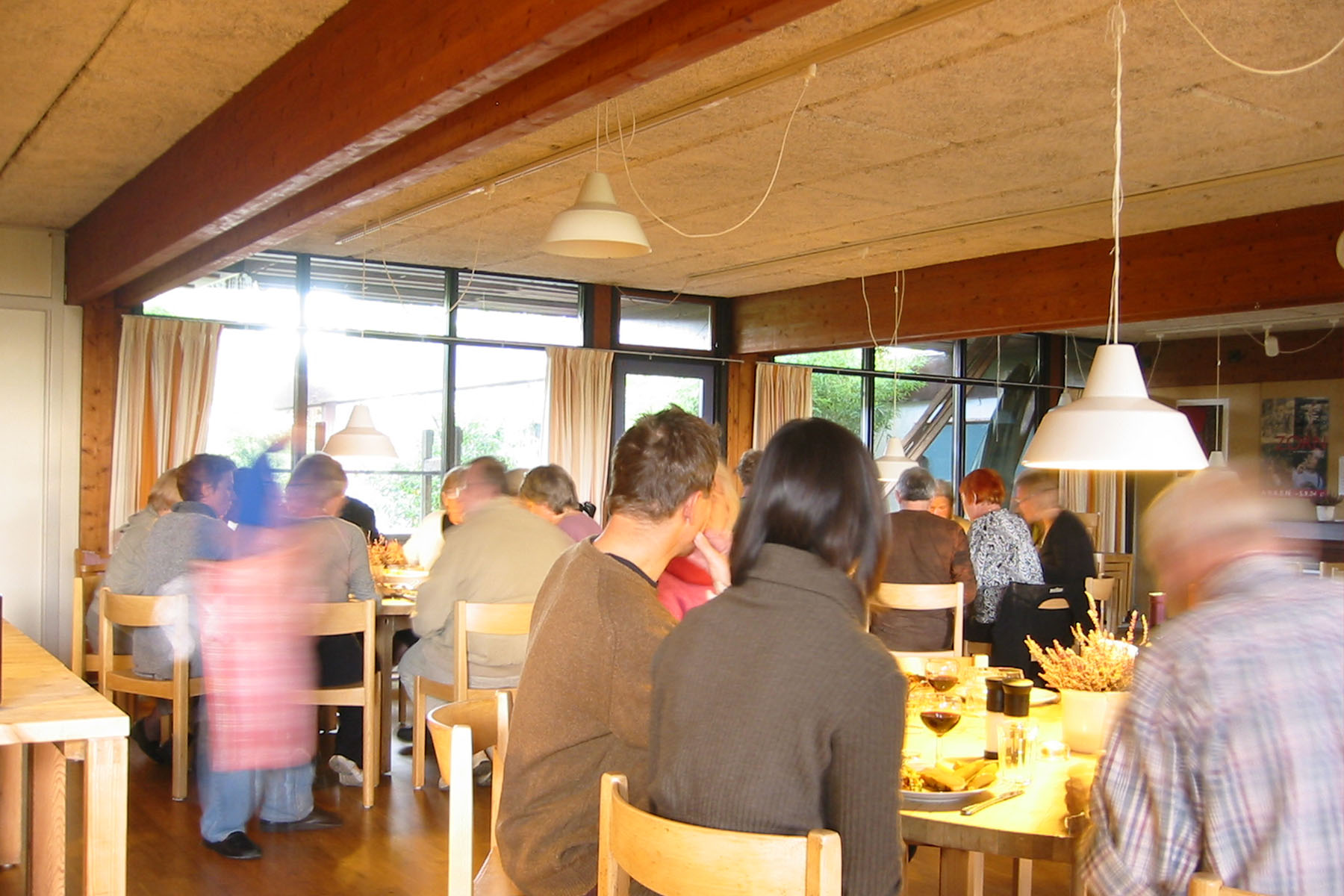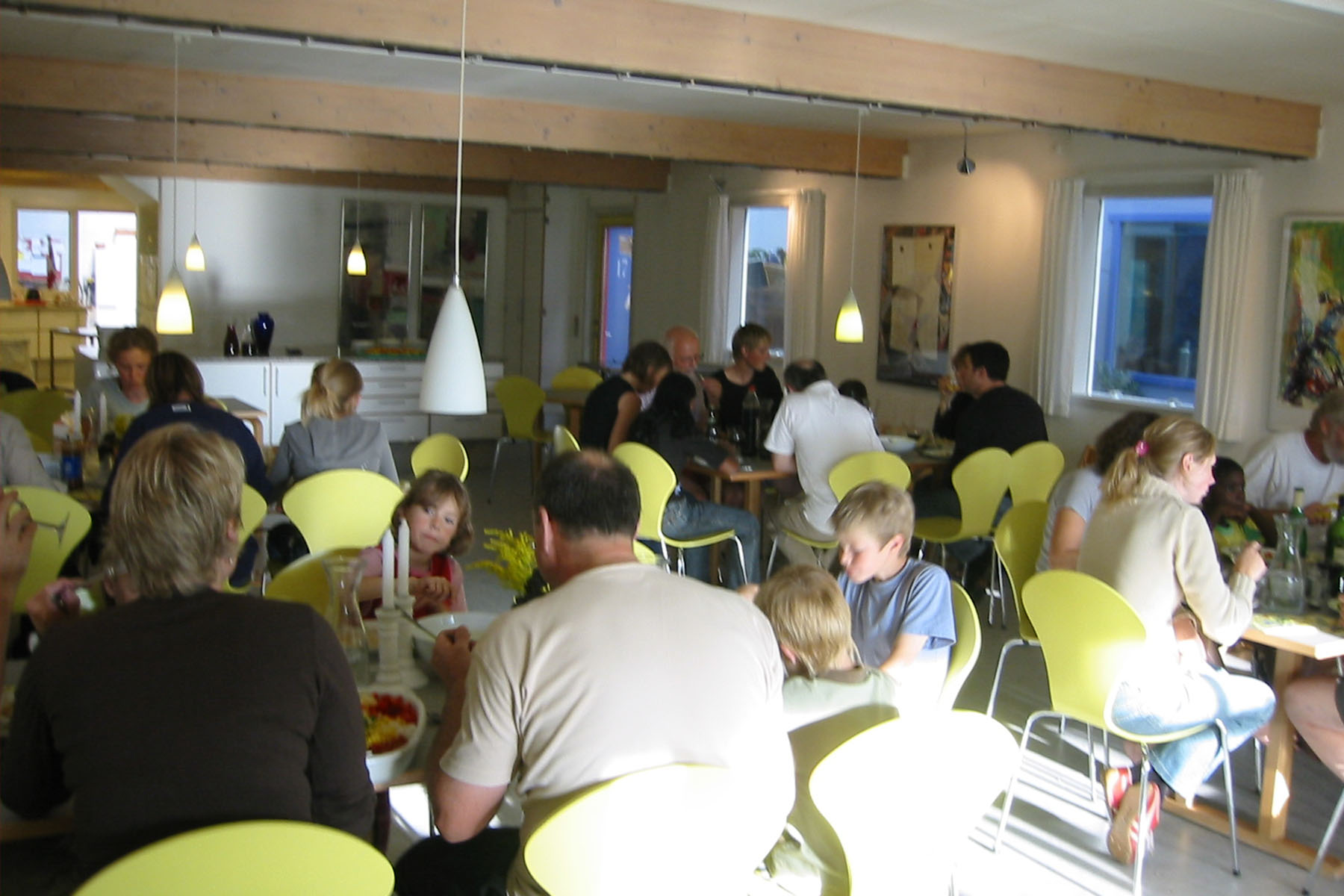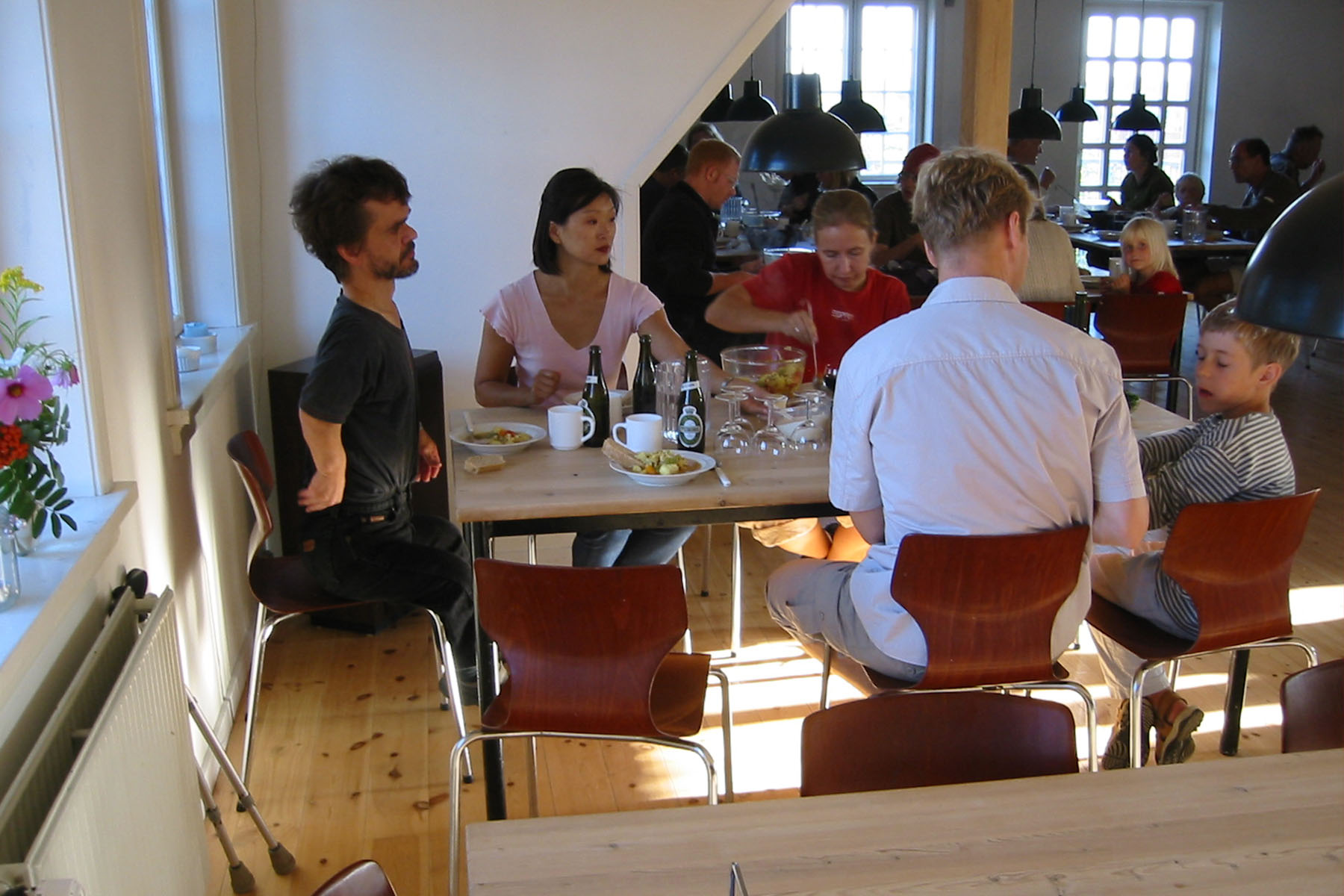Gathering over group meals is integral to forging resilient bonds within cohousing communities.
“…communal eating plays a vital roll in almost all human societies as a way of binding people together and increasing the extent to which they feel like members of a group.”
Communal eating is the key to establishing communitas within a cohousing community. The opportunity to eat together seemed to form closer bonds in communities which had regularly scheduled common meals. In addition, those communities that had rotating table assignments (monthly, quarterly or semiannually) seemed to form stronger bonds between residents which was evident from their conversations and interactions.
Since the act of eating together is clearly not about sustenance, pay attention to the environment in which dining occurs.



Please Note:
This series of blog posts is focused on explaining common design patterns in cohousing. Grace Kim, a founding principal and owner of Schemata Workshop, has identified patterns applicable to cohousing from "Pattern Language" by Christopher Alexander and has added some of her own.
Grace's additional patterns pay particular attention to the Common House because its design requires special consideration. As the living room for the community, the Common House sets the initial impression for visitors about what cohousing is, what your community values might be, or the perceived benefits of living in community. Schemata Workshop has analyzed scores of common houses in Denmark and North America to discern what does and does not work. Following Alexander's concept of Pattern Language, Grace has thoroughly documented the necessary programmatic and design elements for a successful Common House.
To learn more about cohousing at Schemata, visit our cohousing page.

